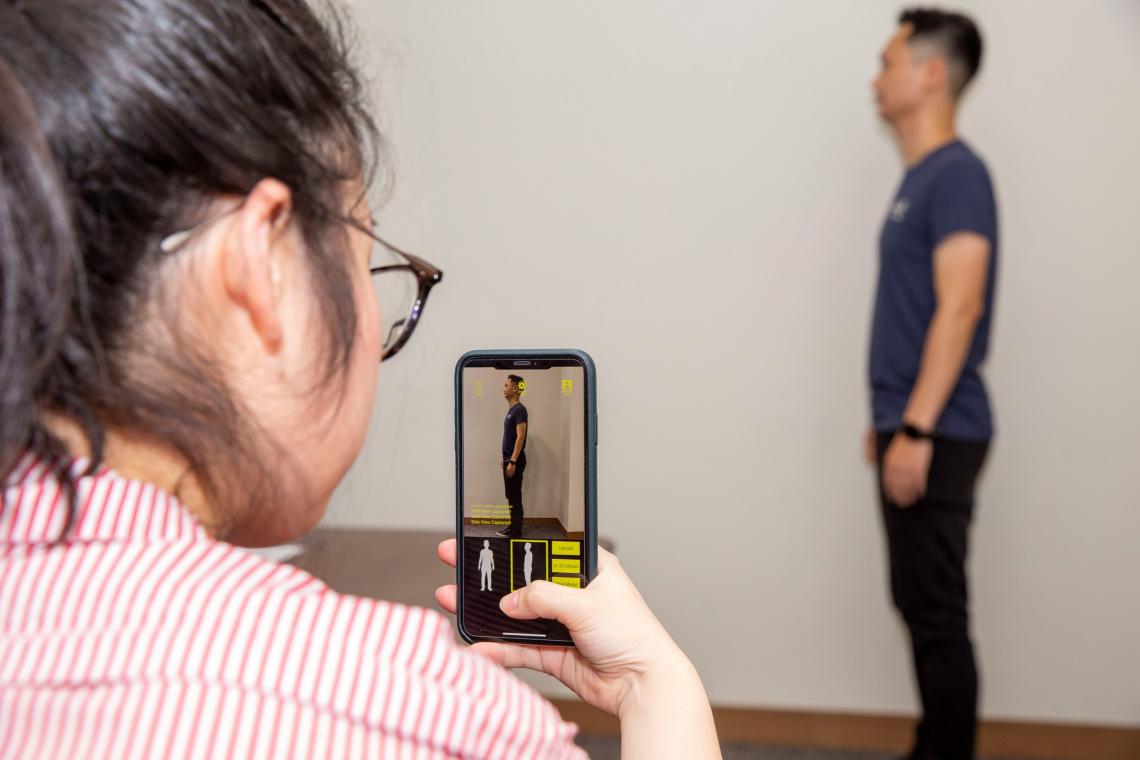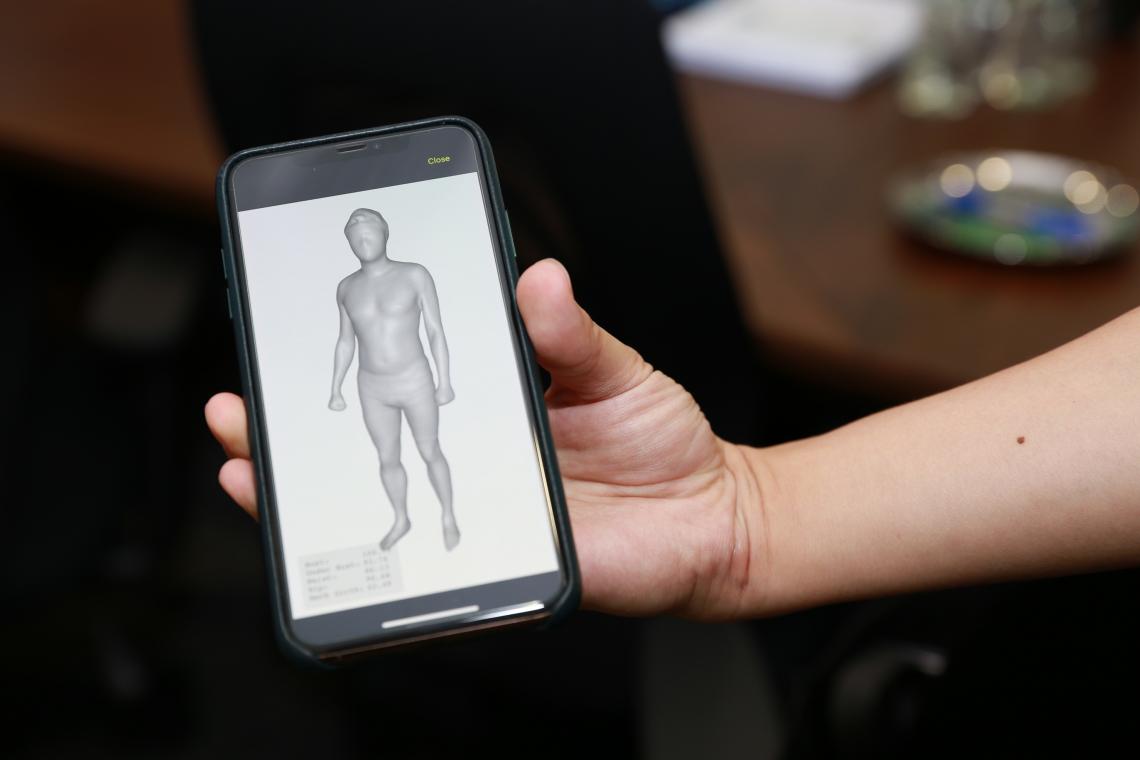Prof. Charlie C.L. Wang from the Department of Mechanical and Automation Engineering of CUHK (front) and Mark Sheung (back) from the research team introduce the Shape Driven Technology. This project recently won the Silver Award in the 47th Geneva International Invention Exhibition.
With innovative vision, Prof. Wang developed the 3D geometric modeling techniques for the digital design and manufacturing of personalised comfort wetsuits, which was awarded the Computing and Information Engineering (CIE) Young Engineer Award by the American Society of Mechanical Engineers (ASME). Since then, Prof. Wang and his team have been optimising their project. They established a start-up company – Shape Driven Tech this year with the support from the University. The application of their technology has been extended to a variety of areas, including clothes, footwear, beauty, dental and medical appliances. Their aim is to achieve knowledge transfer by transforming the technology developed by the university into daily applications and promote the upgrade of I4.0.
This project can change the current operation mode of the manufacturing industry. The key to success is to break the traditional size limitation and to model it by digital 3D human bodies instead. As a result, the fabrication of clothes and other wearable products will be based solely on the physical interfaces of human bodies. With the increasing popularity of the smartphone, the research team is improving the capability to acquire the 3D human models by making use of the deep-learning and big-data analysis technology in the field of artificial intelligence. The users only need a smartphone with the relevant pre-installed apps to capture the front and the side photos of a human body, which can serve as an alternative to the complicated 3D scanning procedure. 3D human models will be built with a list of dimensional measurements based on the photos taken by the smartphone. As the system equipped with the surface flattening technique, the 3D human model will be converted into 2D pattern information via the intelligent design and auto-transfer technique of the system, followed by the preparation of the pattern and raw materials by the machines. The manufacturer can then produce personalised clothes and shoes to accurate measurements. To protect the privacy of the users, their visual identity will be hidden during the process of turning the photos into the 3D human models.
Different from other apps available in the market that stay at the conventional level of size driven made-by-measure, this project serves as the bridge between the customers and manufacturers to provide the direct customer-to-manufacturer (C2M) solution. For example, with tailor-made suit for men, customers only need to provide suitable photos to the system to directly generate the information for production by the manufacturers, which saves time and operating costs. If the manufacturer is equipped with digital knitting machines, the manufacturing process can be fully automated. From order to delivery, the time for a tailor-made suit will be significantly reduced from 2-3 weeks to 2-3 days. This shows the great market potential for this project.
This technology can also be applied to medical and other daily life projects. For example, dentists can customise braces according to the shape of the patient’s teeth. For surgical operations, doctors can fabricate patient-specific instruments according to the shape of the patient’s bone, which improves the working efficiency and accuracy. When making virtual reality glasses and medical masks, they can be customised according to the shape of the user’s face to achieve a more comfortable fit to prevent light and air leakage. Beauty masks and functional underwear can also be customised according to the entire face and body shape of the user. Prof. Wang said, “We are now conducting the testing of the fourth dimension – thermal. In addition to modelling the shape of a human body, we also measure the body temperature in various parts of the body to customise the material thickness and the structure of wearable products in different parts accordingly. As a result, the efficiency of heat convection in sportswear and bicycle helmets can be customised and enhanced. When being applied to a plaster for bone fractures, the design can be customised to improve the thermal comfort. I hope that this technology will help the industrial development of Hong Kong and also the world. In addition to reducing the production time and cost, it will bring more personalised products to the users. This will lead to a breakthrough of the conventional supply chain for design and manufacturing to achieve the upgrade to I4.0 / smart manufacturing.”
The users only need a smartphone with the relevant pre-installed apps to capture the front and the side photos of a human body, which can serve as an alternative to the complicated 3D scanning procedure.
To protect the privacy of the users, their visual identity will be hidden during the process of turning the photos into the 3D human models.





